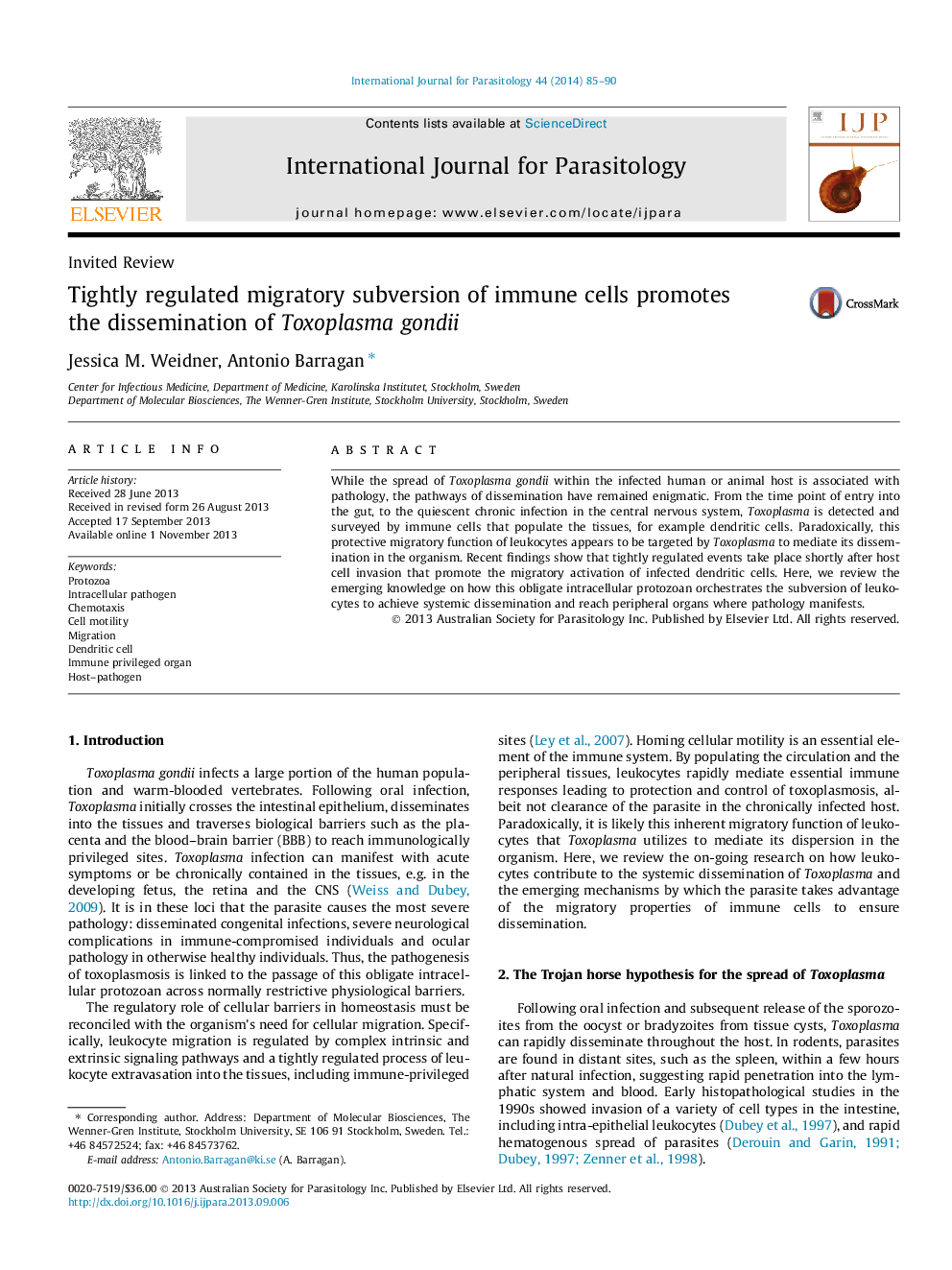| کد مقاله | کد نشریه | سال انتشار | مقاله انگلیسی | نسخه تمام متن |
|---|---|---|---|---|
| 2436088 | 1107273 | 2014 | 6 صفحه PDF | دانلود رایگان |
• Toxoplasma gondii promotes its dissemination by infecting leukocytes.
• A hypermigratory phenotype is induced in Toxoplasma-infected dendritic cells.
• Tightly regulated signaling events define the migratory activation of dendritic cells.
• Activation of the GABAergic system in infected dendritic cells has a motogenic effect.
• Motility, adhesion and chemotaxis are modulated in infected dendritic cells.
While the spread of Toxoplasma gondii within the infected human or animal host is associated with pathology, the pathways of dissemination have remained enigmatic. From the time point of entry into the gut, to the quiescent chronic infection in the central nervous system, Toxoplasma is detected and surveyed by immune cells that populate the tissues, for example dendritic cells. Paradoxically, this protective migratory function of leukocytes appears to be targeted by Toxoplasma to mediate its dissemination in the organism. Recent findings show that tightly regulated events take place shortly after host cell invasion that promote the migratory activation of infected dendritic cells. Here, we review the emerging knowledge on how this obligate intracellular protozoan orchestrates the subversion of leukocytes to achieve systemic dissemination and reach peripheral organs where pathology manifests.
Figure optionsDownload high-quality image (84 K)Download as PowerPoint slide
Journal: International Journal for Parasitology - Volume 44, Issue 2, February 2014, Pages 85–90
